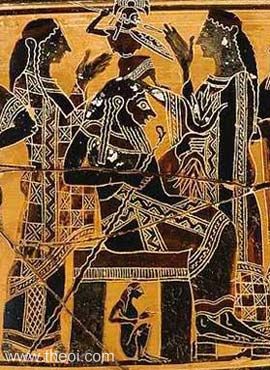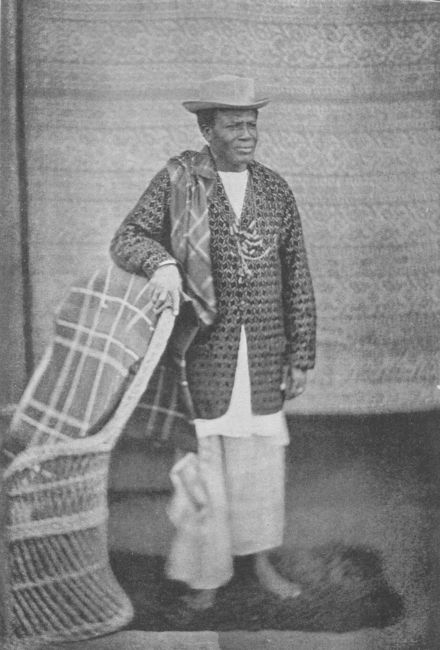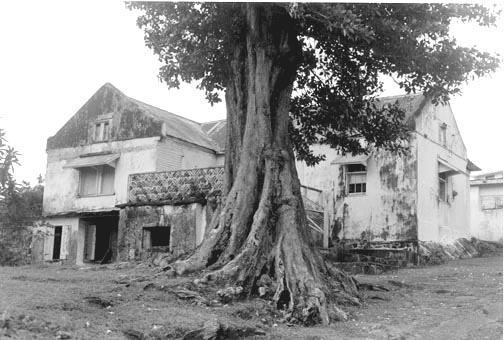Category Archives: Rastas
SESOSTRIS THE GREAT, THE EGYPTIAN HERCULES.
By Samuel David Ewing
Pg.225. “Eratosthenes ( ? ) ( From Syncellus ) App.II Fr. 39 King of Thebes 34. The thirty fourth King of Thebes was Sistosichermes, “Valiant Heracles,” ( Sistosis or Sesortosis, “Valiant Hermes or Heracles” ), for 55 years. Anno Mundi 3791.” From Manetho, With An English Translation By W.G. Waddell, published by Harvard University Press , London 1940, 1948.
Sesostris the Great’s name has been translated in various ways from the Greek, Roman, and English translations as Senusret I, Senwosret I, Sistosis, Sesortosis, Sesoothis, and Sen-Wos- Ret I. Sen-Wos-Ret means “son of Wosret.”
Wosret is the goddess who was known as a form of Hathor in Egypt. Wosret ruled over precious metals, wealth, mines, and treasures. The ancient black African ruler, Sen-Wos-Ret I knew Her to be his patron deity during his successful military campaigns, and she was the motivating ideal behind his mission to conquer the entire world.
With that in mind I will now list some of his accomplishments:
1. He used prisoners of war for an extensive building projects throughout Egypt.
2. He was worshiped as a living god during the 12th Dynasty of Egypt.
3. Sen-Wos- Ret I began a series of victorious military expeditions against the Asiatics, Libyans, and various nomads ( Bedouins ) who threatened the people of Egypt. He became ruler of Egypt in 1971 B.C. and ruled until 1928 B.C.
4. He enforced loyalty and discipline in Egypt, giving the governors responsibility for the management of the nomes ( towns ).
5. He was the first Egyptian king to rule over Ethiopia, including lower Nubia, and use its gold mines to add to the empires wealth.
6. Strabo, XVII reports that Sen-Wos-Ret I had built a canal starting from the Nile River to the Red Sea.
7. He ordered the rebuilding of the Temple of Amen at Ipet-sut ( Karnak ) in stone.
8. He erected red granite obelisks to be placed at Heliopolis ( Northern Anu ).
9. He led a great expedition to Punt on the Somali Coast.
10. He had built the largest pyramid in the history of the Middle Kingdom Period of Egypt’s history. The pyramid was 352 ft. tall.
11. He protected Egypt’s borders by winning victories in a succession of military conquests to the South to gain the benefits of the economic mechanisms in Lower Nubia and to continue trading with the nations of West Asia.
12. The ancient Greeks called him “Heracles Kharops” ( Heracles the Flashing-Eyed ), “Kekrops”, and “Sistosichermes Valiant Hercules.” He founded and built Athens, Greece, considered to be the greatest center of culture, academics, art, and the sciences in ancient Greece. This city is credited to being the catalyst for European – based civilization ( the West ) and originated with the black king Sen-Wos- Ret I known as Heracles Kharops.
13. He was the second ruler of the 12th Dynasty, he ruled for 34 years, and built 13 fortresses from Egypt to the Second Cataract. He made use of the harvest from Wadi Hammamat for food supplies.
14. He completed the construction of the Wall Of Princes. He founded colonies in the areas of the Danube River, the Black Sea, Strabo, Book III records that Sen-Wos- Ret I conquered Palestine, Syria, Mesopotamia, Armenia, Iberia, Colchis, and ancient Hindu writings record his invasion of India.
Numerous sources indicate that he was the first man to conquer the entire world centuries before Alexander the Great was born, that this has been a point of controversy among scholars and archaeologist, however evidence is being discovered that verifies the claims of ancient writers.
Was Phoenician sport the foundation of the Olympic Games?
Was Phoenician sport the foundation of the Olympic Games?
I In the light of archaeological Excavations
In Amrit, on the coast of northern Phœnicia, we have uncovered a Pheoenician STADIUM, dating at least from the XVth century BC. The town’s temple, a typical example of Phoenician temples, is found 200 m. from the stadium.
This stadium measures 225 m. long and 30 m. wide. Its topography is identical to that of the stadium at Olympia. The area of Amrit has been cited under the name of “Mrt” and “Amrat” in Egyptian texts (XVth century BC) and of “Marathus” in classical scripts. It is certain that there are only very old Phoenician remains in Amrit and no Greek or Roman monuments.
In Tyre, the first archaeological excavations showed sports grounds of the Hellenic and Roman periods as well as traces of Phoenician sports grounds.
Palaestra and Gymnasium (Hellenic These two monuments coincide with the topography and the measurements of the palaestra and gymnasium of Olympia, dating from the III-IIth centuries BC. It can very easily be established that the Hellenic palaestra of Tyre was built on the remains of a much older palaestra, which appears to be Phoenician.
The gymnasium is found about ten metres away. This monument with a double porch about 200 m. long and 11 metres wide, was originally a covered hall, as in Olympia, and was used by the stadium runners (192,27m.) for training when it rained or was very hot.
The Roman baths, built later, are found in this gymnasium.
In the period of the Greeks, the palaestra was the exercise place for wrestling, boxing and the jump, while the gymnasium was used for running and discus and javelin throwing.
The games of the gymnasium and palaestra were not common in Roman times, said Vitruve (1st century BC).1
They replaced them with the amphitheatre ceremonies from which the gladiators and animal fighters evolved. The amphitheatre, together with the circus, was the high-place of popular and sports festivals during the Roman period.
Circus (Roman period) The circus is found some 1500 metres from the gymnasium with an “Arc de Triomphe” and Roman tombs at its entrance. If Tyre had been affected by the Roman period, we have not found evidence of an amphitheatre up till now, which should not be far from this circus. The sport complexes of Roman games usually centred on the circus and amphitheatre.
II. In the light of texts and inscriptions
King Jaja of Opobo
Gill Nobles interviews Bob Marley (Video)
Founding President Julius Nyerere: “Africans Unite – Without Unity, There Is No Future For Africa!”
Burning Spear: The Sun
One love, one God, one destiny….
Eileithyia Black Goddess Of The Ancient Greeks

Eleithyiae, Zeus, the birth of Athena, Athenian
tripod kothos C6th B.C., Musée du Louvre
EILEITHYIA (or Ilithyia) was the goddess of childbirth and labour pains. According to some there were two Eileithyiai, one who furthered birth and one who protracted the labour. Her name means “she who comes to aid” or “relieve” from the Greek word elêluthyia. Her Roman counterpart was Natio (“Birth”) or Lucina (“Light bringer”).
The Moorish Tribes of Algerie and Tunisie: The Kabyles
890 –“The Kabyles or Kabaily of Algerian and Tunisian territories…besides tillage, work the mines contained in their mountains…They live in huts made of branches of trees and covered with clay which resemble the Magalia of the old Numidians…They are of middle stature, their complexion brown and sometimes nearly black.” Written in The Encyclopedia Britannica: Dictionary of Arts, Sciences and General Literature Henry G. Allen Company p. 261 Volume I 1890.





